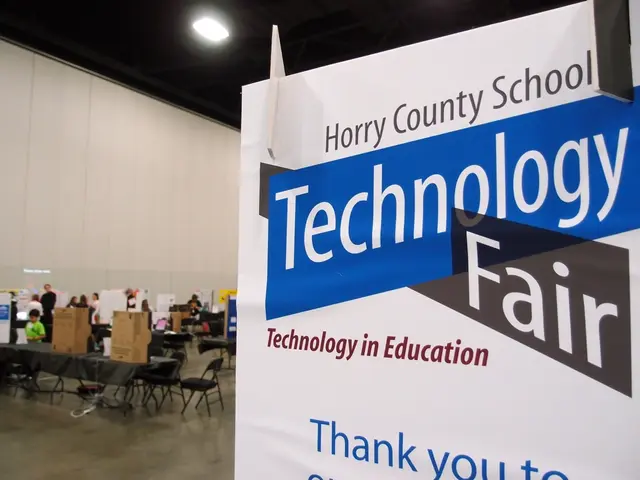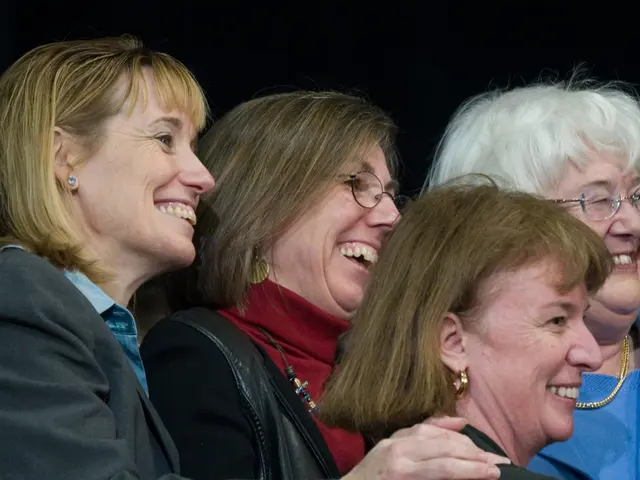Fostering Community Growth: Nurturing Future Pioneers in Educational Technology Leadership
**Broadening Horizons in Education: Recruiting Non-Traditional Talent and Building an Inclusive Culture**
School districts are increasingly recognizing the importance of diversifying their workforce, particularly in the realm of edtech leadership. This shift is aimed at addressing critical staffing shortages and fostering a more dynamic, innovative, and responsive educational environment.
**Recruitment Strategies**
Districts are actively seeking talent from non-traditional backgrounds, such as career-changers, retirees, military veterans, and professionals with relevant skills from outside education. Partnerships with specialized education staffing agencies are being forged to quickly fill hard-to-fill roles, and innovative outreach methods like career pop-up events, industry partnerships, and social media campaigns are being employed to attract candidates who may not actively seek roles in education.
To make the district more attractive to candidates, bureaucratic hurdles and administrative delays are being reduced, mirroring agile, private-sector hiring practices. Additionally, professional development and certification programs are being offered to help non-traditional candidates transition into educational roles, especially in high-need areas like special education and STEM. Alternative certification routes and part-time, hybrid, or contract opportunities are also being provided to accommodate candidates who may not fit the traditional full-time educator mold.
**Creating an Inclusive Culture**
Building an inclusive culture is key in creating a positive and supportive environment for team growth. This involves co-designing edtech initiatives with students, educators, and community members to ensure tools and programs truly meet learner needs and reflect diverse perspectives. Collaborative leadership pipelines are being created, ensuring decisions reflect the needs of the entire school community.
Districts are implementing regular training on unconscious bias, cultural competency, and inclusive leadership for all staff, especially those in hiring and leadership roles. Diverse hiring panels are being used to minimize bias and signal the district’s commitment to inclusion. Mentorship programs are being established to pair new hires from non-traditional backgrounds with experienced educators and leaders, providing guidance and advocacy for career advancement.
**Strategic Partnerships and Continuous Improvement**
Collaboration with edtech companies that prioritize inclusive design and student voice is essential. Feedback loops are being created to identify areas for improvement in recruitment and culture-building efforts. Data-driven decisions are being made to assess the effectiveness of diversity and inclusion initiatives and adjust strategies as needed.
By embedding these practices, districts can not only address critical staffing shortages but also foster a more dynamic, innovative, and responsive educational environment. The importance of visual representation of various backgrounds in fostering a sense of belonging and validating diverse identities cannot be overstated.
In conclusion, the future of education lies in the hands of diverse, dynamic, and innovative leaders. By actively recruiting non-traditional talent, building an inclusive culture, and fostering strategic partnerships, school districts are paving the way for a brighter, more equitable future in education.
- To complement the recruitment of non-traditional talent, schools are partnering with education staffing agencies that specialize in filling hard-to-fill roles.
- Specialized training and certification programs are being offered to help new hires, particularly those from non-traditional backgrounds, transition smoothly into educational roles, especially in high-need areas like STEM.
- Strategic partnerships with edtech companies that prioritize inclusive design and student voice are being forged to ensure the creation of tools and programs that truly meet diverse learner needs.
- Mentorship programs are being established for new hires from non-traditional backgrounds, pairing them with experienced educators and leaders to guide personal and career growth.
- By implementing data-driven strategies and continuously assessing the effectiveness of diversity and inclusion initiatives, school districts can ensure continual improvement, fostering a responsive and innovative educational environment focused on personal growth and career development.




